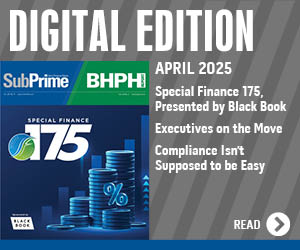3 credit bureaus rebut subprime ‘bubble’ talk again to open AFSA event

The American Financial Services Association made the decision not long before the holidays to add another special panel discussion to its Vehicle Finance Conference; a segment dedicated solely to the subprime segment and to assuage concerns of a “bubble.”
In front of a standing-room only audience at the Sheraton New Orleans, a trio of experts from each of the three major credit bureaus to varying degrees all emphasized that there is no bubble, and the amount of subprime auto paper still outstanding is actually less than where it stood before the Great Recession.
AFSA gathered together Equifax chief economist Amy Crews Cutts, Experian senior director of automotive finance Melinda Zabritski and Jason Laky — who is senior vice president and automotive and consumer lending business leader at TransUnion — for a session ahead of the main festivities at the conference that began later on Tuesday.
Each of the experts took turns dissecting various parts of the subprime auto finance market, maintaining that it’s not “bubbling” like some media outlets might speculate while circling back to the mortgage meltdown that derailed the economy.
“People don’t buy cars to flip them. They buy them to get to work,” Crews Cutts said. “There’s definitely not a bubble.”
Later Laky added, “It’s such a different part of the economy than mortgage.” And when speaking about subprime auto paper being booked nowadays, Laky said, “We’re still not even up to where we were back in 2009.”
Zabritski also chimed in, saying, “We had this massive trough in 2009 where there wasn’t any funds to lend. We’re seeing the market turn around with higher scores in longer term loans.”
The 45-minute session moved quickly as the assembled panel touched on elements of the subprime space that are now different than perhaps 10 years ago, especially with the advent of alternative credit data that can present a more detailed background about a consumer’s past performance.
However, each credit bureau shared some concerns about subprime auto finance.
Laky mentioned that terms stretched to 75 months are fine, if the consumer actually has the budget capacity to maintain the payment commitments.
Zabritski noted that loan-to-value ratios often are at 110 percent and higher, even when a buyer makes a 10-percent down payment. That’s because of all of the taxes, fees and other ancillary costs that go into delivery.
Crews Cutts pointed out how it’s important to watch trend data about payment performance of subprime borrowers with regard to all of their monthly commitments because sometimes their ability to handle their finances can produce a “train wreck.”
Editor’s note: Much more coverage from the discussions and presentations during AFSA’s Vehicle Finance Conference will be included in upcoming reports from SubPrime Auto Finance News.

 View The Latest Edition
View The Latest Edition

